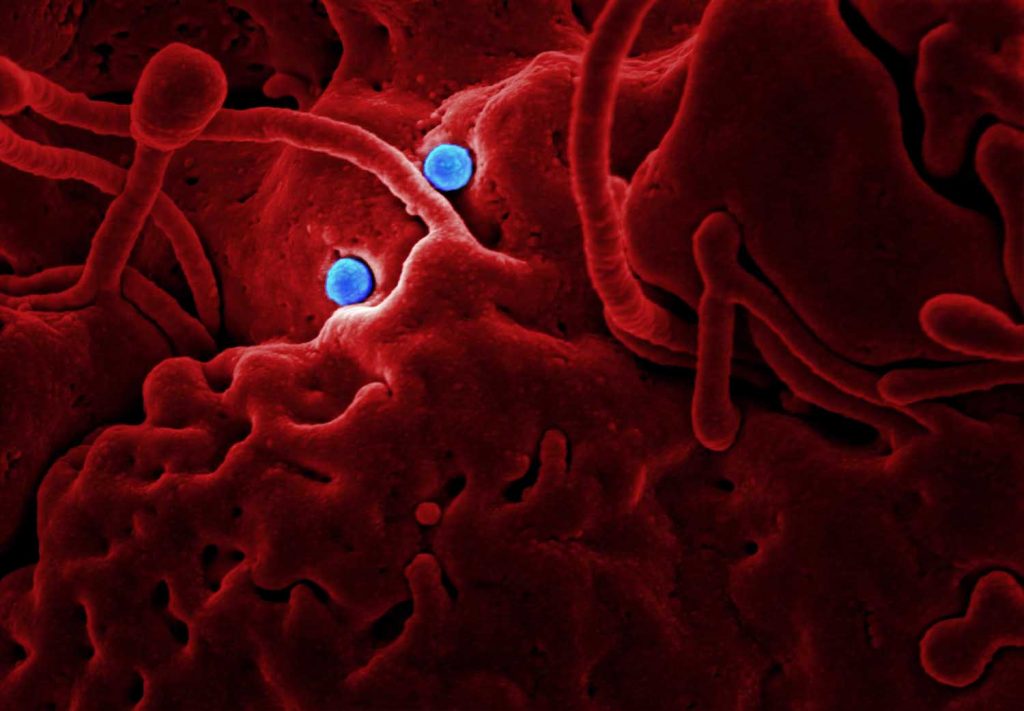African Trypanosomiasis (African Sleeping Sickness)
African trypanosomiasis is a disease carried by the tsetse fly. There are two types of the disease: West African trypanosomiasis causes a chronic infection lasting years, and East African trypanosomiasis causes acute illness lasting several weeks.
Cat Scratch Disease
Cat scratches and bites can cause cat scratch disease, a bacterial infection carried in cat saliva.
Cervicitis
A painful irritation of the cervix, cervicitis often lasts several months or longer, sometimes occurring after childbirth or use of oral contraceptives.
Chickenpox
Chickenpox is a highly contagious disease, usually associated with childhood. The disease is caused by the varicella-zoster virus (VZV). Transmission occurs from person-to-person by direct contact or through the air.
Cholera
Cholera is an acute, infectious disease caused by the consumption of water or food contaminated with the bacterium Vibrio cholerae.
Bone Cancers
There are many bone cancers that require clinical care by a physician or other health care professional. Listed in the directory below are some, for which we have provided a brief overview.
Conjunctivitis
Conjunctivitis, also known as “pink eye,” is an inflammation of the conjunctiva of the eye.
Creeping Eruption
Creeping eruption is a skin infection caused by hookworms, which normally are found on dogs and cats.
Croup
Croup is a disease caused by a virus that leads to swelling in the airways and problems breathing.
Cryptosporidiosis
Cryptosporidiosis is a diarrheal infection caused by the parasite Cryptosporidium.
Dengue Fever
Dengue is a viral disease transmitted by Aedes mosquitoes mainly in tropical and subtropical areas of the world, with the greatest risks occurring in South Central Asia, Caribbean (except Cuba and the Cayman Islands), and Central America
Diphtheria
Diphtheria is an acute bacterial disease that can infect the body in two areas: the throat (respiratory diphtheria) and the skin (skin or cutaneous diphtheria).
Escherichia coli 0157:H7
A particular strain of E. coli known as E. coli O157:H7 causes a severe intestinal infection in humans. It is the most common strain to cause illness in people.
Encephalitis
Encephalitis is an inflammation caused by a viral infection
Fifth Disease
Fifth disease is a viral illness that results in a viral exanthem. Exanthem is another name for a rash or skin eruption.
Fungal Infections of the Skin
Skin fungi live in the dead, top layer of skin cells in moist areas of the body, such as between the toes, groin, and under the breasts. These fungal infections cause only a small amount of irritation.

Giardiasis
Giardiasis is an infectious diarrheal disease caused by the parasite Giardia lamblia, which can be transmitted through oral-fecal contact and by water contaminated by faeces
HIV/AIDS
HIV/AIDS is a syndrome that kills cells of the immune system, impairing the body’s ability to fight infection.
Hepatitis A
Hepatitis A is a highly contagious and sometimes serious liver disease caused by the hepatitis A virus.
Hepatitis B
Hepatitis B is a blood-borne microorganism transmitted by exposure to the hepatitis B virus through infectious body fluids.
Hepatitis C
Hepatitis C (once called non-A, non-B hepatitis) is a liver disease caused by a recently identified blood-borne virus.
Infectious Mononucleosis
Infectious mononucleosis, also known as mononucleosis, “mono,” or glandular fever, is characterized by swollen lymph glands and chronic fatigue.
Influenza
Influenza (or flu) is a highly contagious viral respiratory tract infection
Lyme Disease
While most tick bites are harmless, several species can cause life-threatening diseases. Two of these well-known diseases are Rocky Mountain Spotted Fever and Lyme disease.
Malaria
Malaria is a disease caused by a parasite that is transmitted person-to-person by the bite of an infected Anopheles mosquito. These mosquitoes are present in the tropics and subtropics in almost all countries.
Measles
Measles is a viral illness characterized by a distinct rash and a fever.
Meningitis
Meningitis is an inflammation of the meninges, the membranes that surround the brain.
Molluscum Contagiosum
Molluscum contagiosum is a viral disease of the skin that causes small, pink or skin-colored bumps on the skin
Mononucleosis
Infectious mononucleosis, also known as mononucleosis, “mono,” or glandular fever, is characterized by swollen lymph glands and chronic fatigue.
Mouth Infections
Some people call it a cold sore, others a fever blister, but this annoying and often painful chronic condition is caused by the same virus: herpes simplex.
Mumps
Mumps is an acute and highly contagious viral illness that usually occurs in childhood. Spread by airborne droplets from the upper respiratory tract, the disease usually takes two to three weeks to appear
Other Bacterial Skin Infections
The following are other common bacterial skin infections: Erysipelas, Erythrasma, Impetigo, and Paronychia.

Prostate Cancer (Condition)
Early prostate cancer may not present any symptoms and can only be found with regular prostate examinations by your physician.
Pelvic Inflammatory Disease (PID)
Caused by a certain type of bacteria, pelvic inflammatory disease results in pelvic pain and the possibility of an ectopic pregnancy (a fertilized egg becoming implanted outside the uterus).
Pharyngitis / Tonsillitis
Pharyngitis and tonsillitis are infections in the throat that cause inflammation
Poliomyelitis
Poliomyelitis is a highly contagious infectious disease caused by three types of poliovirus.
Rabies
Animal bites and scratches, even when they are minor, can become infected and spread bacteria to other parts of the body
Rocky Mountain Spotted Fever
Rocky Mountain Spotted Fever (RMSF) is an infection caused by the bite of an infected tick.
Roseola
Roseola is a viral illness that results in a viral exanthem.
Rubella (German Measles)
Rubella, sometimes called German measles, is an acute viral infection that causes a mild illness in children and slightly more severe illness in adults.
Septicemia
Septicemia is the clinical name for blood poisoning.
Severe Acute Respiratory Syndrome (SARS)
Severe Acute Respiratory Syndrome (SARS)
Severe acute respiratory syndrome (SARS) is a rapidly spreading, potentially fatal infectious viral disease.
Sexually Transmitted Diseases (STDs)
Sexually transmitted diseases are infectious diseases transmitted through sexual contact.
Tetanus
Tetanus is an acute, sometimes fatal, disease of the central nervous system, caused by the toxin of the tetanus bacterium, which usually enters the body through an open wound.
Tinea Infections (Ringworm)
Different fungi, depending on their location on the body, cause ringworm. Ringworm is characterized by ring-shaped, red, scaly patches with clearing centers.
Tinea Versicolor
Different fungi, depending on their location on the body, cause ringworm. Ringworm is characterized by ring-shaped, red, scaly patches with clearing centers.
Tonsillitis
Tonsillitis refers to the inflammation of a tonsil – the large, fleshy, oval masses of tissue that lie in the lateral wall of the oral pharynx on either side of the throat.
